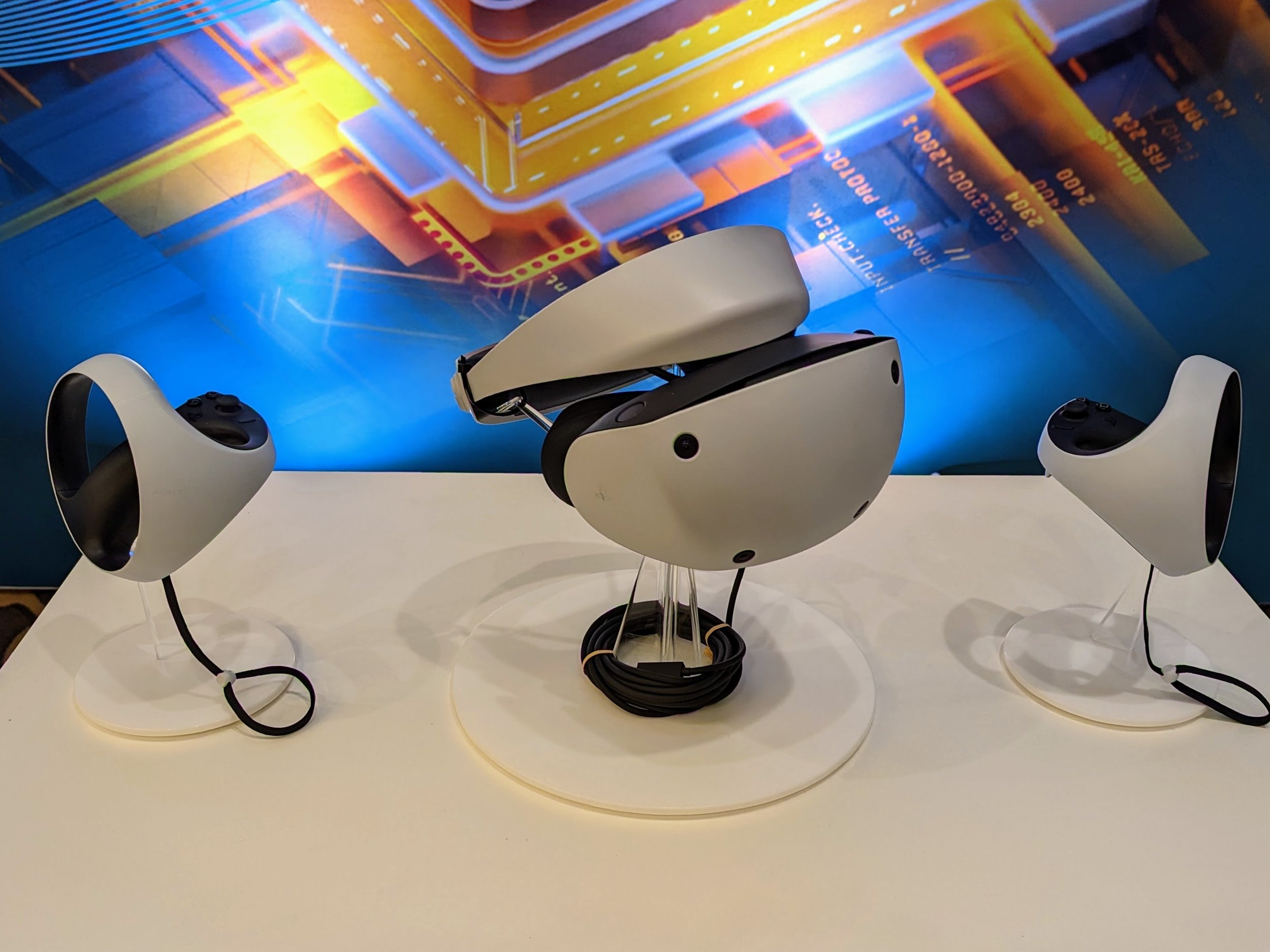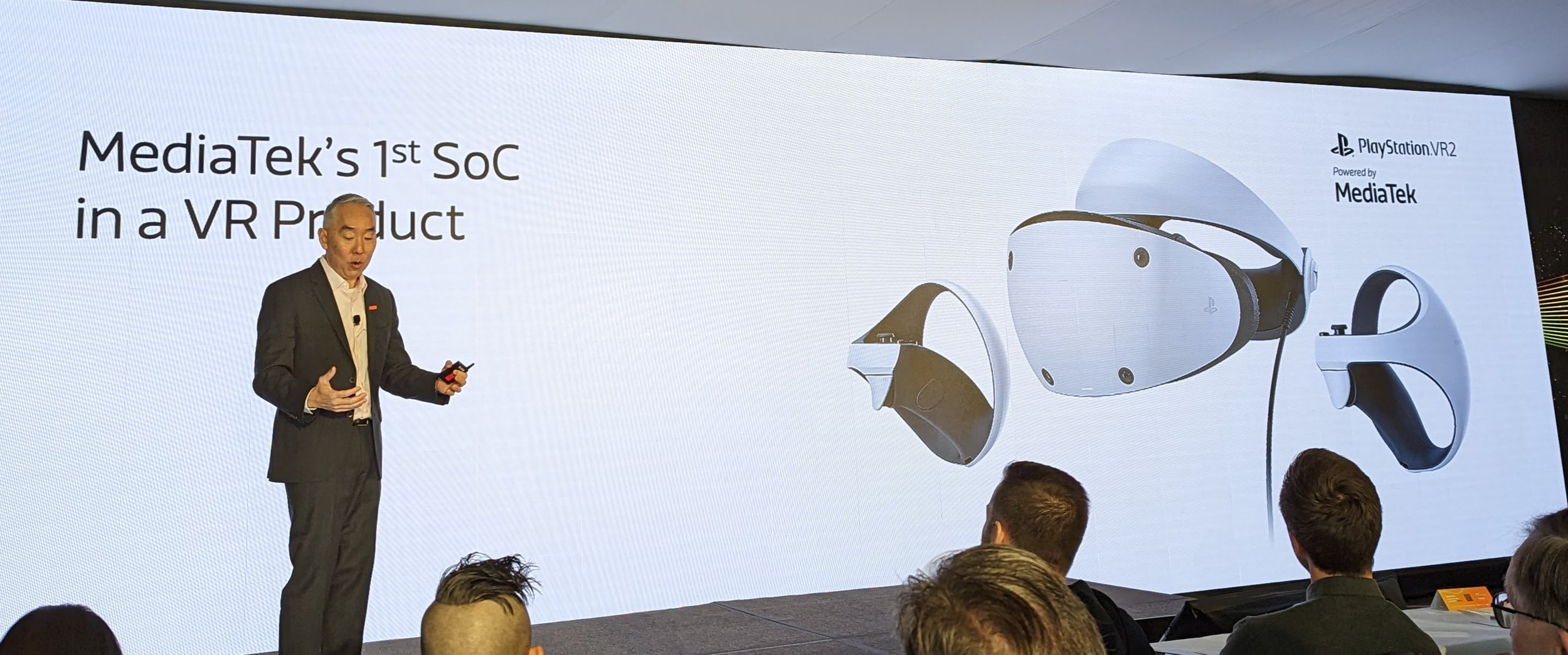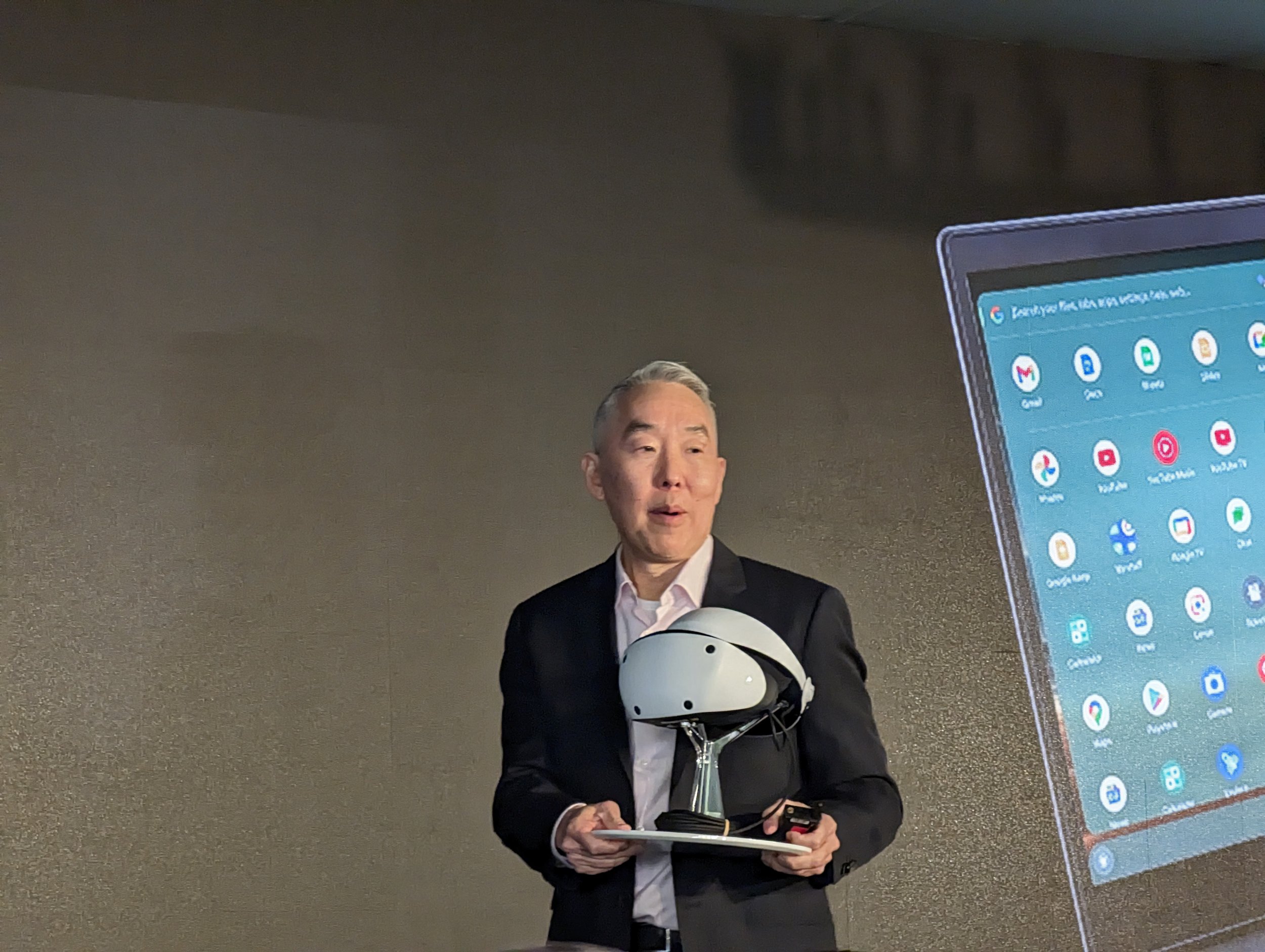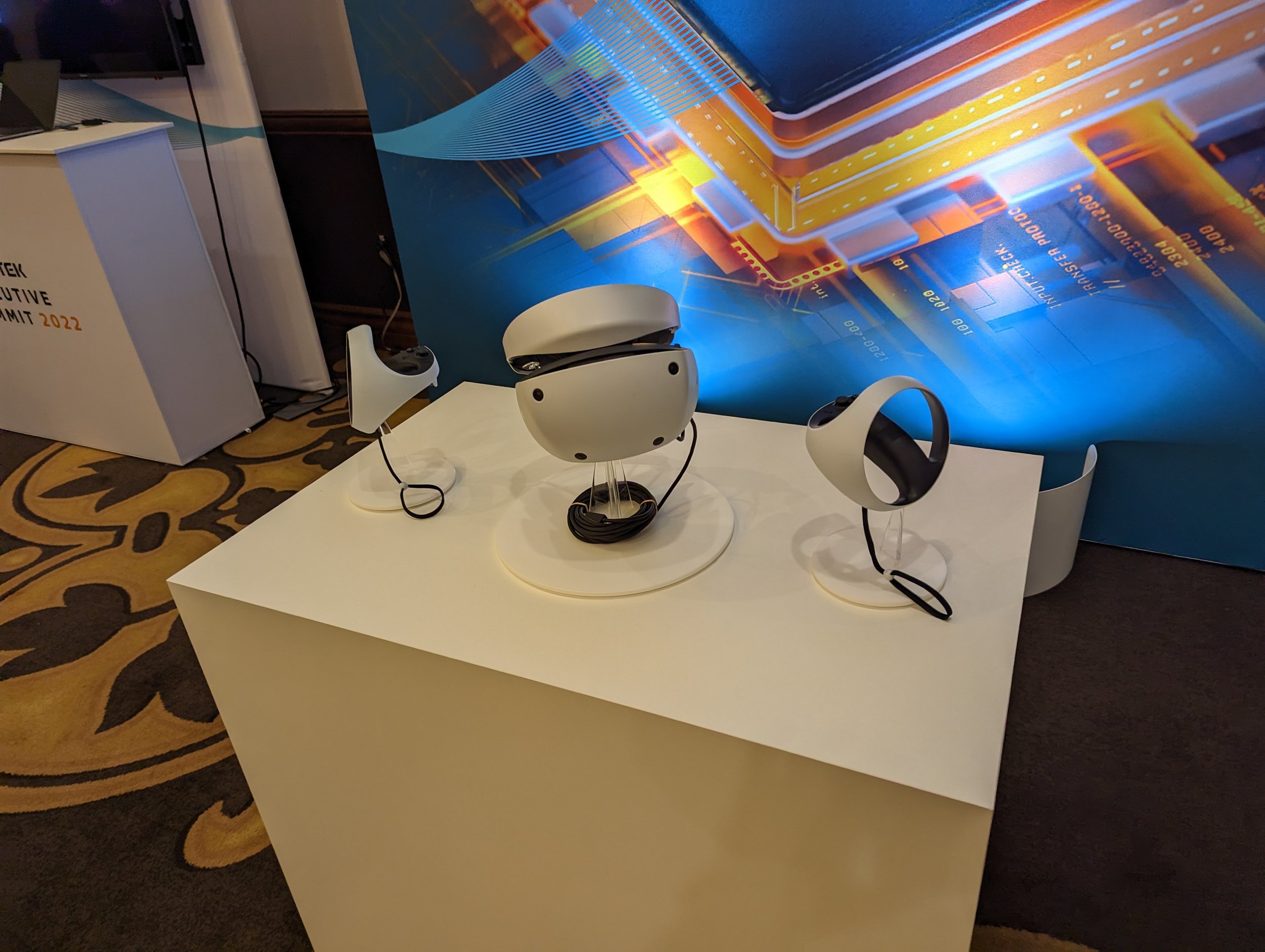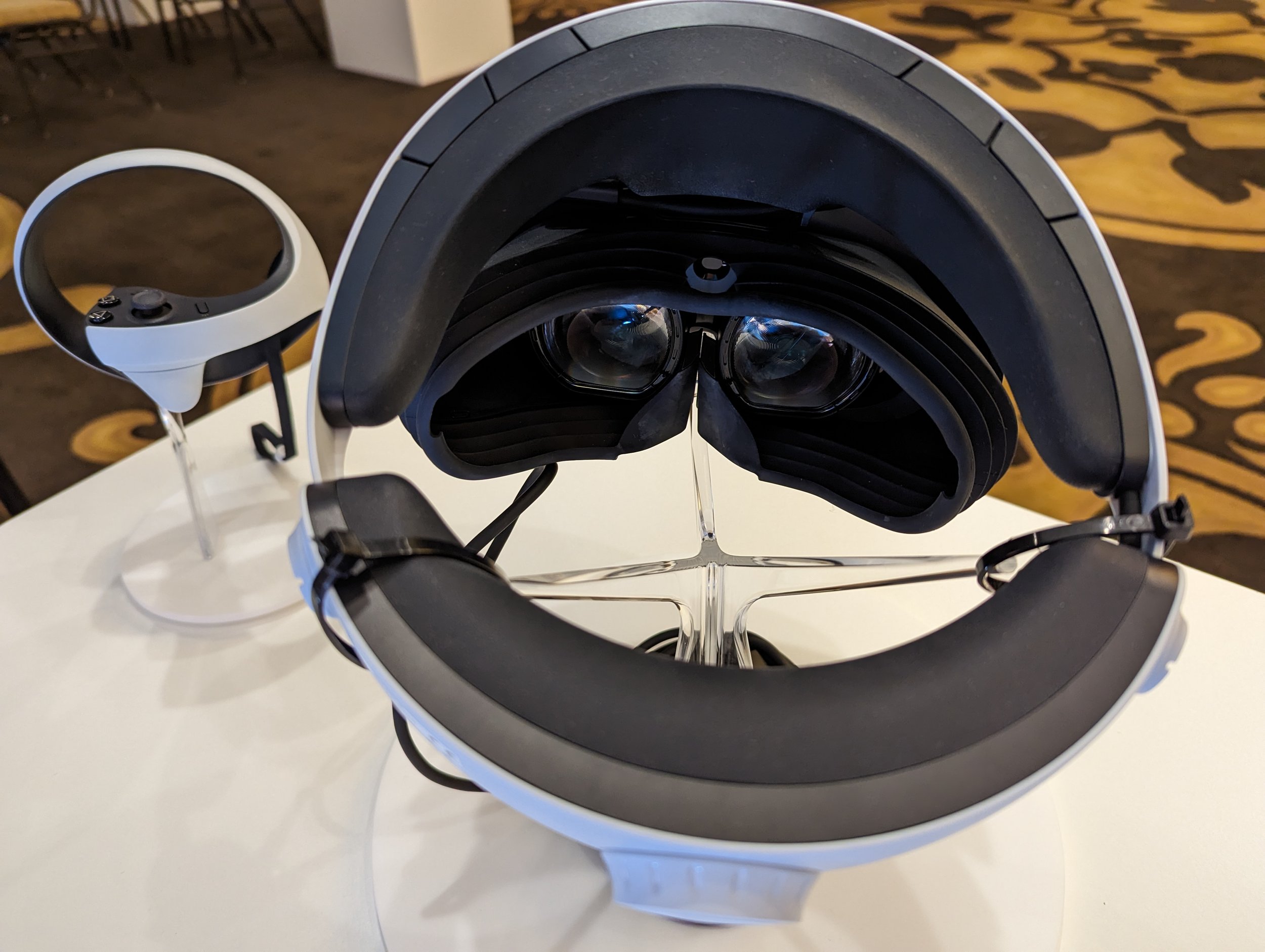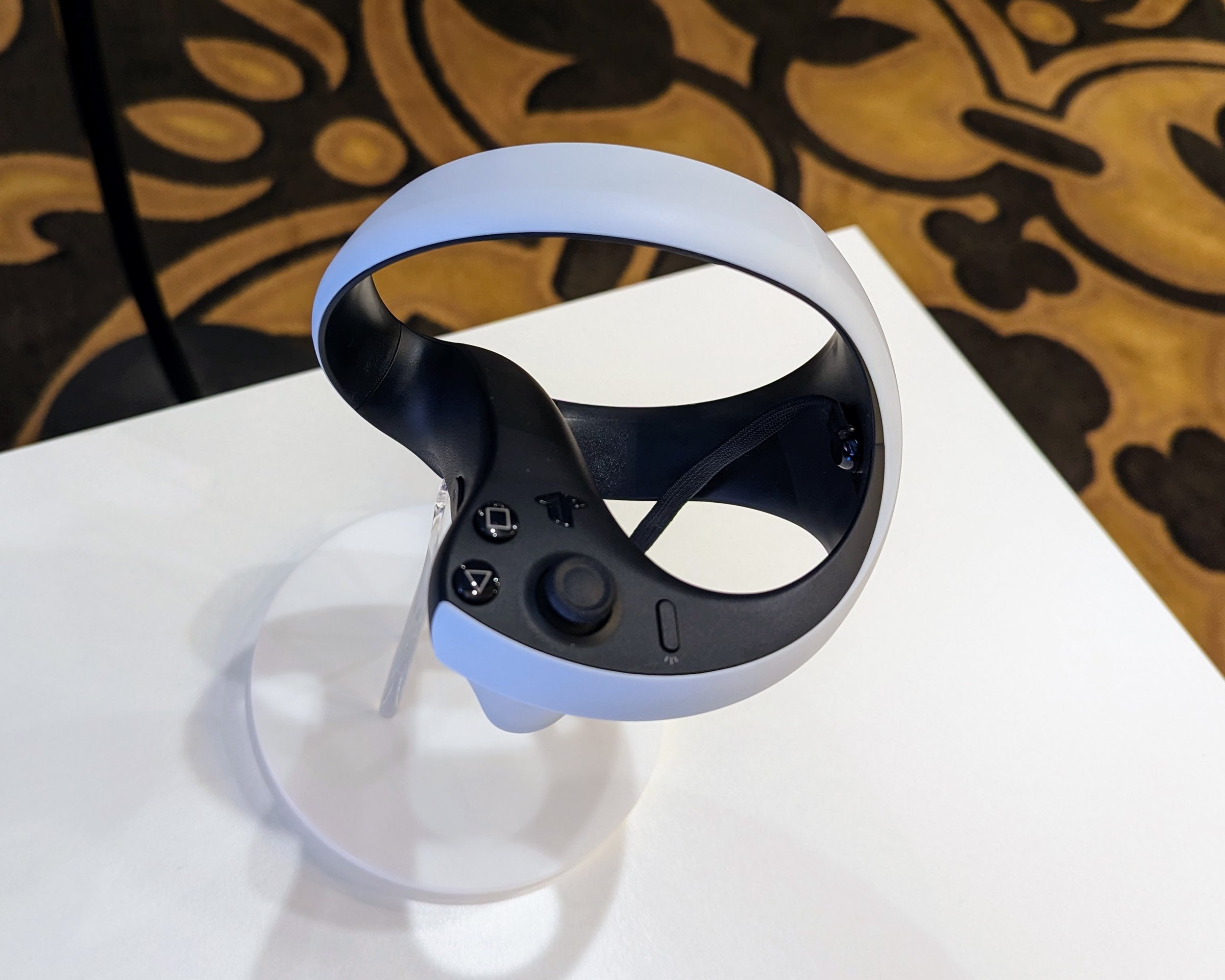Sony’s PSVR 2 Is Powerful, But May Be Stuck in the Middle
PSVR 2 prototype at MediaTek Executive Summit
Sony recently announced PSVR 2 pricing ($550), and availability (Feb 23), and, at MediaTek’s Executive Summit, it revealed that MediaTek custom ASICs are powering the headset and each controller. The technical specs – especially the optics, resolution, and eye tracking – are impressive at this price point, and Sony’s PSVR has a clearly understood use case: gaming. Game consoles live or die based on the content, so until we have a better idea of first and third party support it will be impossible to fully pass judgement on the PSVR 2’s prospects.
The technical specs Sony is bringing to the PSVR 2 are impressive. Resolution is 2000 x 2040 per eye, with a 90Hz or 120Hz refresh rate, eye tracking, and 110 degree field of view. In English, this means that images should be sharp, motion sickness should be minimized, and the images should feel immersive. Sony may be able to use eye tracking and foveated rendering to heighten detail in the area you are looking at and keep frame rates high, though it remains to be seen if this is implemented in practice. There are four cameras on the headset to enable controller tracking without requiring a separate PlayStation Camera like on the PlayStation 4/PlayStation VR. The cameras should also allow at least limited pass-through, though Sony hasn’t said anything about room mapping/AI for AR experiences.
Sony and MediaTek have not released specs on the custom ASICs used to manage the headset and in each controller, but the PS5’s AMD CPU, AMD GPU, and extremely fast storage and memory capabilities are well known. By tethering the PSVR 2 headset to a PS5, Sony is not just offloading the processing and graphics to what is essentially a mid-level gaming PC, it enables much higher power delivery and heat generation/dissipation than something with a battery that you’d want on your head. MediaTek does not have off-the-shelf VR silicon like Qualcomm’s XR2 platform, but it is willing to create custom solutions that meet Sony’s specific needs. (Regardless of how the PSVR2 fares in the market, this is a HUGE design win for MediaTek.)
This combination of a wall-powered next-generation AMD game console, tethered to custom MediaTek processors, managing high-end optics should lead to extremely immersive VR experiences. Compared to Meta’s latest $1500 Quest Pro, Sony’s PSVR 2 is at least 1/3 cheaper, has slightly higher resolution, field of view, and refresh rate, powered by significantly more graphics and computing headroom. Sony’s plan seems to be to build out a library of AAA titles with nearly high-end PC VR level performance, without the complexity and expense of PC VR systems.
However, it is just as likely that consumers don’t compare the PSVR 2 with the Quest Pro (or an Alienware PC and a Vive Pro 2) but with a Quest 2 or …nothing at all. When the PlayStation VR launched in 2016, it was a $400 accessory for a $400 console. Crucially, that console was the PlayStation 4, which was well on its way to topping 100 million units sold. Many potential PlayStation VR buyers already owned one, so it didn’t feel like Sony was asking $800 for the solution, but “just” $400 to add immersion. Today, the PS5 is certainly a hit, but even two years after launch it remains in remarkably short supply, and Sony has only sold 17 million units of the $500 console so far. That either means that the PSVR 2 will need a 5x higher attach rate than the original PSVR to sell the same number of headsets, or consumers will have to consider the full $1,050 cost at purchase. Even that assumes that Sony will be able to avoid further supply chain issues.
The PSVR 2 is also entering a different competitive environment than its predecessor. When the PSVR launched in 2016, VR was either cheap and phone-based (GearVR), extremely limited stand-alone (Google Daydream), or pricey, dedicated-space PC-based systems from Oculus and HTC. The PSVR offered more capable VR experience than the Gear VR and quickly amassed a reasonable library of content. Today, Meta’s Quest 2 has capabilities that are good enough for VR gaming and exercise at a lower price than the PSVR 2 on its own. While Meta CEO Mark Zuckerberg seems focused on productivity in the metaverse, the Quest 2’s content library is heavily oriented towards entertainment and fitness, exactly the categories the PSVR 2 is targeting. That lower price is does not reflect the Quest 2’s technical capabilities; its original $299 price was heavily subsidized by Meta to “build the metaverse,” and even at today’s $399, it is still being sold at lower (possibly negative) margins.
There is no doubt that the PSVR 2 will have noticeably better quality graphics than a Quest 2, but Sony can’t apply that additional resolution to take on PC VR for productivity, design, or professional simulation. Sony’s brand and developer program are not enterprise-ready. Varjo – which sells VR systems to Volvo for car design and for use as pilot training simulators – has nothing to worry about.
So that leaves rich, immersive games. Half-Life: Alyx, a branch of the AAA game series, is one of the most popular VR games on Steam, so there is certainly appetite among early adopters for more than ‘bite-sized’ VR experiences like Beat Saber. Sony’s PSVR 2 will be launching with a title in the well-known Horizon franchise, along with VR versions or games from other platforms, like Star Wars: Tales from the Galaxy’s Edge, Resident Evil 4, No Man’s Sky, and Among Us. Will that be enough? Will the PSVR be comfortable to play for several hours at a time? VR systems generally are not today.
The Quest 2 is a terrific short-form VR system, and yet it reportedly has high abandonment rates – after purchase, it too often ends up in a closet. AAA titles drive game console purchases, and they ought to be the PSVR 2’s calling card, but there aren’t going to be too many to choose from at launch. If the PSVR 2 doesn’t quickly build a large installed base, the economics of supporting the platform with expensive long-form content may not make sense for developers. That could leave the PSVR stuck in the middle: overkill for Beat Saber but not suited for enterprise use cases.
Avi Greengart is President and Lead Analyst at Techsponential. To discuss the implications of this report on your business, product, or investment strategies, contact Avi at avi@techsponential.com or +1 (201) 677-8284.

